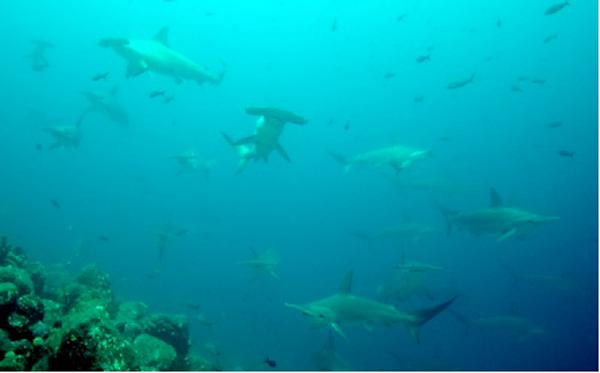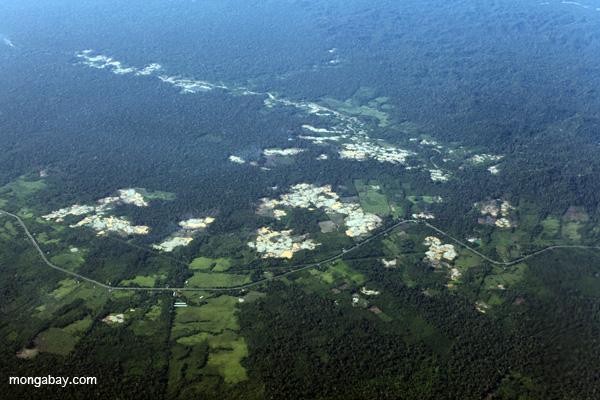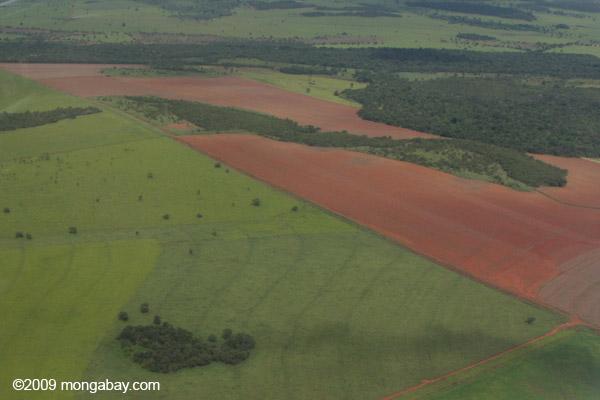In 1773, an expedition headed by Constantine John Phipps, the Second Baron Mulgrave, embarked on a dangerous journey North—to see how far they could go before having to turn back. In his report at the end of the exploratory voyage, he notes that every precaution was taken to ensure a successful voyage—extra clothing on board for when “the higher latitudes” were reached, spirits for use by the sick, and life boats designed to carry the crew of both ships, should one be lost. Along the way, Phipps encountered and described for the first time, a most magnificent animal—one that has captured the fascination of modern day explorers and the public alike for centuries.
“We killed several with our musquets [sic], and the seamen ate of their flesh, though exceeding coarse,” writes Phipps of the polar bear (Ursus maritumus), large numbers of which he saw on islands and adjacent ice fields. Standing four feet tall at the shoulder, and weighing a whopping 610 lbs (without head, skin or entrails—a result of being prepared for consumption), the polar bear was and still is the largest land predator on Earth—a carnivorous, complex, and, sadly, highly threatened bear.
Polar bears exist only in the Northern Hemisphere, preferring to live on the edges of great stands of sea ice, where the water is shallow and their favorite prey, the ringed seal (Phoca hispida), can be consumed. In the winter as the ice grows, they migrate with it, as much as 1,000 kilometers to stay with the southern edge of the pack ice. Thus seasonal melting and freezing of the ice has a significant impact on their ability to feed, and ultimately, their survival.
Polar bear young, besides melting even the stoniest of hearts with their teddy bear looks, are extremely altricial, or underdeveloped, when first born. Female bears, nearly 400 to 500 times as large as their miniscule cubs, remain within their dens, nursing their cubs with fat-rich milk till they weigh as much as 100 kilograms by the time they complete their first year.
After Phipps’ exploration, not much more became known about this elusive mammal to scientists for hundreds of years, occupying as it did some of the most desolate landscapes on the planet. A large chunk of what we know today has derived in some form from the incredible research of a modern day explorer—Steven Amstrup.
As Chief Scientist for Polar Bears International, Amstrup has worked diligently on polar bears for over 30 years. He radio-collared some of the first bears and discovered that annual activity areas for 75 tracked females averaged at a stunning 149,000 square kilometers. His recent work, published in the journal Nature, highlighted the cost of global warming to these incredible animals and the sea ice they so closely depend on.
According to Amstrup, to safeguard the polar bear “the only solution is to stop the rise in CO2 and other greenhouse gases. All other management actions are treating only the symptoms and not the disease.”
In the last 25 years, as global temperatures have increased, the extent of sea-ice in the Northern Hemisphere has abruptly declined by at least a million square kilometers. Through extensive capture and release programs, scientists have now recorded that body weights of female polar bears have declined. The numbers of independent yearlings they produce have also fallen, increasing the number of years between two successful births. At the same time, sea-ice in areas such as the Hudson Bay has been melting earlier each summer.
In a recent interview, Amstrup talked about the fate of the polar bear if we continue to fail to control global temperature increases, and described how the world’s biggest carnivore are an important marker for our own fates.
Steven Amstrup will be presenting at the up-coming Wildlife Conservation Network Expo in San Francisco on October 11th, 2014, an event which will be headed by Frank Pope and Dr. Iain Douglas-Hamilton of Save the Elephants.
INTERVIEW WITH STEVEN AMSTRUP
Mongabay: You have been conducting research on polar bears now for 35 years—how did you first begin?
Steven Amstrup: I started polar bear research in 1980, when the USFWS (U.S. Fish and Wildlife Service) needed someone to take over the (at the time) fledgling program. I was selected for the post because of my previous experience studying bears, and faith from my lab director that I could hit the ground running. I arrived, established objectives and areas of focus, secured outside funding, and built the program from a one-man show to a staff of five researchers.
Mongabay: Polar bears are the largest extant bears—some have been too heavy to lift and weigh during capture. You’ve been closely involved with mark-recapture studies of these bears—what is it like to work with animals this size?
Steven Amstrup: Polar bears truly are exciting to watch, to study, and to get up close and personal with. Think about it-giant white bears roaming around in an environment that looks like the surface of the moon. How could it get more exciting?
Mongabay: How has the use of radio telemeters and satellite tracking enlightened us as to the movements of polar bears?
Steven Amstrup: I was the first to successfully use radio telemetry to follow polar bears and monitor their long-term movements. I learned where they went to den and have cubs, and that they are the most mobile of all four-legged creatures. I showed that they didn’t occupy all of the same areas every year, but did maintain multi-year activity areas outside of which they seldom traveled. And they did not drift passively with the ice. Polar bear researchers worldwide now use the methods I developed in the early 1980s.
Mongabay: The primary prey of the polar bear is the ringed seal—have sea ice levels affected this prey population, and thus the bears themselves?
Steven Amstrup: We currently do not know for sure how ringed seals are being affected by global warming loss of sea ice. They spend most of their lives under the ice and for much of the year even their breathing holes are covered by snow. We do know that less snow on ice and warmer temperatures in spring ultimately will reduce their breeding success. This is because they give birth in little caves beneath the snow surface and above the ice surface. If they don’t have sufficient snow, come spring for these “lairs”, or if the lairs melt out because the weather is warmer than usual, the pups are easy prey not only to bears, but foxes, gulls, and ravens. But ringed seals are so difficult to study that we don’t know if those effects are yet playing out in any areas. It is likely that at some point it will be obvious there are fewer ringed seals, but we may not really see it coming.
Mongabay: Polar bears are defined as marine mammals because of their nearly exclusive reliance on sea ice as opposed to land. What have been the effects of melting ice on polar bear population sizes? Are land-denning females more or less affected by this than males?
Steven Amstrup: They are marine mammals because they derive their sustenance from the marine system. They probably could perform most of their other life-history needs on land, but terrestrial arctic regions are food poor from the standpoint of these large bears. Less ice in productive areas means less time to hunt for seals. This is likely to affect survival of cubs first, and we already have seen some of that in Hudson Bay and the Beaufort Sea.
Mongabay: Does the current relatively high inter-birth interval (3 years) of polar bears restrict population replacement required to maintain current population densities?
Steven Amstrup: Polar bears always have had a long inter-birth interval. Only in Hudson Bay are we aware that a two-year interval was common, and there I think it was only about 20 percent of females. But it is no longer occurring there. The issue is not that it takes 3 years for females to wean their young, but the fact that survival of those young is jeopardized by the poorer foraging conditions for their mothers. Only about 3 percent of the western Hudson Bay population, for example, is now composed of yearlings. During the early years of my study in Alaska it was 15 percent! That means that substantially fewer cubs are surviving their first year of life.
Mongabay: Polar bears are essentially disease free, can forego reproduction for survival, are top predators in their environment and have rates of adult survival in excess of 96 percent where left undisturbed (such as at Beaufort). This makes them remarkably resilient, and yet, their numbers continue to drop. How have these magnificent animals been overcome?
Steven Amstrup: This is a habitat issue. We are losing about 13 percent of the summer sea ice every decade on average (there are lots of inter-annual fluctuations, so every year is not just a bit worse than the previous). Imagine the impact on a rancher’s grazing herd if 13 percent of his land was paved every decade!
It is important to remember that declining numbers only have been documented in a couple areas so far. The big concern is that the longer we allow the world to warm (and the laws of physics require it to warm as long as greenhouse gas levels rise), the less ice habitat we will have and the more polar bears will be disappearing.
This is a point the general media have totally failed to grasp. Polar bear range-wide disappearance is mainly a problem we will see in the future. Polar bears in some areas are already in trouble. But as far as we know, many subpopulations may still be doing just fine. So the larger fear is mainly for the future—not just today. And, not just for polar bears, either. Polar bears are harbingers of troubles to come to the rest of life on earth including us. The good news is that because we still have many apparently healthy populations, and we still have the ability to stop the warming in time to save many of them. In so-doing, we will save much of the rest of life on Earth as we know it.
Mongabay: Some estimates claim that the polar ice cap will disappear almost entirely during summer in the next 100 years—What’s going to happen to polar bears if this occurs?
Steven Amstrup: They will be gone. And if we wait until then to address greenhouse gas rise, no one will have time to be thinking about polar bears. We will have so many human challenges (crop failures, drought, flood, famine, human refugee problems where they never have occurred before), that polar bears and other wildlife will be far from anyone’s mind.
Mongabay: Your Nature paper in 2010 showed that the negative effects of global warming could be reversed and the polar bear’s environment restored to some extent—can you explain how this is possible and how realistically this can be achieved?
Steven Amstrup: We are currently just over 400 parts per million of carbon dioxide. Our paper showed that, there was not an irreversible tipping point in the sea ice, and that if we can stop CO2 rise at around 450, we will preserve polar bears in many of their current areas. Importantly, the lack of a tipping point means that it is not an all or nothing deal. If we overshoot 450 a bit, it is not the end of the world, and wherever we stop emissions and temperature rise, we will have saved more ice and be better off than if we had not stopped the rise.
Mongabay: Polar bears can be legally hunted in some areas—is over-harvesting a threat to their numbers today given historical extirpations of bears in certain areas through commercial hunting?
Steven Amstrup: In a few areas (e.g. western Hudson Bay), scientists and managers are concerned about excessive harvest. Over most of the polar bear range, however, harvest regulations adopted in the early 1970s brought human kills under control. With a few exceptions, harvest is just not an issue. In fact, some people seem to focus on harvest and other on the ground management issues to intentionally distract from the critical issue of global warming.
Mongabay: Contaminants released into the arctic can build up in the polar bear over time—has this resulted in active reductions in reproduction or survival of the bears?
Steven Amstrup: Some individual polar bears have built up levels of contaminants sufficiently high to compromise immune response and reproduction. I am not aware yet, of any population level effects, however. An interesting sidelight of global warming is the expected increased flow of contaminants into the Arctic Ocean through north flowing rivers in Russia. Many of those large north flowing rivers carry heavy contaminant loads and forecasts are for flows to rise as many northern areas see increased rainfall.
Mongabay: What needs to be done to ensure the future of the bears as well as the other species that make up their environment?
Steven Amstrup: The only solution is to stop the rise in CO2 and other greenhouse gases. All other management actions are treating only the symptoms and not the disease.
Mongabay: What can the layperson do to help?
Steven Amstrup: A comprehensive list of things everyone can do is available on the Polar Bears International web site. Simple things available to all include driving less, driving slower, not using “drive-throughs” or otherwise idling unnecessarily. Keep our houses and businesses warmer in summer and cooler in winter, insulate or re-insulate, and make sure our heating and air conditioning systems are in peak working order.
Most important, however, is for everyone to vote for policy leaders who are interested in moving to a sustainable, low-carbon economy, and voting with our dollars by supporting companies and businesses that are working for sustainability. Global warming is not about conservative or liberal, or Republicans or Democrats. It is about laws of physics we have understood for over a century, and the future of our children—our leaders need to hear that we care about that future.
Citations:
- Amstrup, Steven C., et al. 2010. Greenhouse gas mitigation can reduce sea-ice loss and increase polar bear persistence. Nature 468.7326: 955-958.
- Amstrup, S.C. 2003. Polar bear, Ursus maritimus. Chapter 27 In Wild Mammals of North America: biology, management, and conservation. Edited by G.A. Feldhamer, B.C. Thompson, and J.A. Chapman. John Hopkins University Press, Baltimore. pp. 587-610
- Phipps, C. 1773. Voyage towards the North Pole. Downloaded from https://ia700304.us.archive.org/11/items/voyagetowardsnor00mulg/voyagetowardsnor00mulg.pdf on October 7, 2014
- Reid, P., S. Stammerjohn, R. Massom, T. Scambos, and J. Lieser. 2015, in press. The record 2013 Southern Hemisphere sea-ice extent maximum. Annals of Glaciology 56 (69), doi:10.3189/2015AoG69A892.
This article was originally written and published by Mrinalini Erkenswick Watsa, a contributing writer for news.mongabay.com. For the original article and more information, please click HERE.




